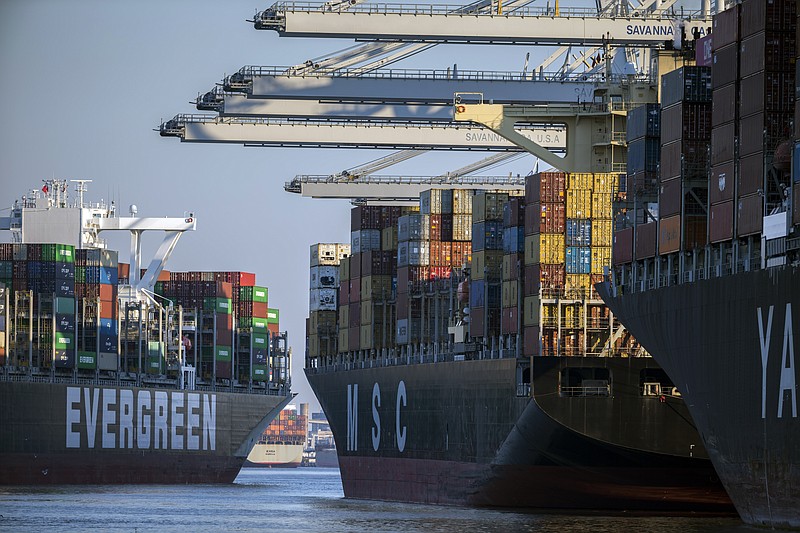Port of Savannah sets shipping record
The Georgia Ports Authority moved an all-time high 519,390 20-foot equivalent container units in May, up 8.5% from a year ago.
"Despite global supply chain challenges, the Port of Savannah continues to be an economic driver, providing reliable, world-class service for port customers across our state and nation," Georgia Gov. Brian Kemp said in an announcement of the port shipping achievement. "Delivering new opportunity for hardworking Georgians and supporting economic prosperity across the Peach State is central to the mission of our deepwater ports."
GPA Executive Director Griff Lynch said Garden City Terminal is handling more business during the current influx of trade than during the previous spike last fall. The additional trade is driven in part by vessels diverting to Savannah from other East and West Coast ports.
As of April, GPA has added 900,000 TEUs of annual capacity to Garden City Terminal. Another 300,000 are expected to come online in July for a new total of more than 7 million TEUs of container handling space.
40,000 transit workers strike in Britain
Tens of thousands of railway workers walked off the job in Britain on Tuesday, bringing the train network to a crawl in the country's biggest transit strike for three decades - and a potential precursor to a summer of labor discontent.
About 40,000 cleaners, signalers, maintenance workers and station staff held a 24-hour strike, with two more planned for Thursday and Saturday. Compounding the pain for commuters, London Underground subway services were also hit by a walkout on Tuesday.
The dispute centers on pay, working conditions and job security as Britain's railways struggle to adapt to travel and commuting habits changed - perhaps forever - by the coronavirus pandemic. With passenger numbers still not back to pre-pandemic levels but the government ending emergency support that kept the railways afloat, train companies are seeking to cut costs and staffing.
Sustained national strikes are uncommon in Britain these days, but unions have warned the country to brace for more as workers face the worst cost-of-living squeeze in more than a generation.
Home sales slow again during May
Sales of previously occupied U.S. homes slowed for the fourth consecutive month as climbing mortgage rates and record high prices discouraged house hunters.
Existing home sales fell 3.4% last month from April to a seasonally adjusted annual rate of 5.41 million, the National Association of Realtors said Tuesday.
That annual sales pace was higher than what economists had expected, according to FactSet. Sales fell 8.6% from May last year.
After climbing to a 6.49 million annual rate in January, sales have fallen to the slowest pace since June 2020, near the start of the pandemic, when they were running at an annualized rate of 4.77 million homes.
Even as home sales slowed, home prices kept climbing in May. The national median home price jumped 14.8% in May from a year earlier to $407,600. That's an all-time high according to data going back to 1999, NAR said.
Amazon retailing gets new leader
Amazon CEO Andy Jassy on Tuesday named a new head for the company's troubled retail business, which is dealing with a glut of warehouse space after a massive expansion during the pandemic.
Doug Herrington will become the new CEO of Amazon's consumer division, which will now be called "Worldwide Amazon Stores," Jassy said in a note to employees.
Herrington has led the company's North American Consumer business since 2015. He replaces Dave Clark, who announced his surprise resignation from the company earlier this month after 23 years. Days later, Clark announced he would join the logistics startup Flexport as its new CEO in September.
The change comes as Jassy is looking to return a "healthy level of profitability" to the Seattle-based company amid rising costs and a slowdown in demand that has left the e-commerce behemoth with too many workers and too much warehouse space.
Amazon saw its profits soar during most of the pandemic, when homebound shoppers turned to online shopping for goods. In response, the company massively expanded its warehousing capacity.
- Compiled by Dave Flessner
